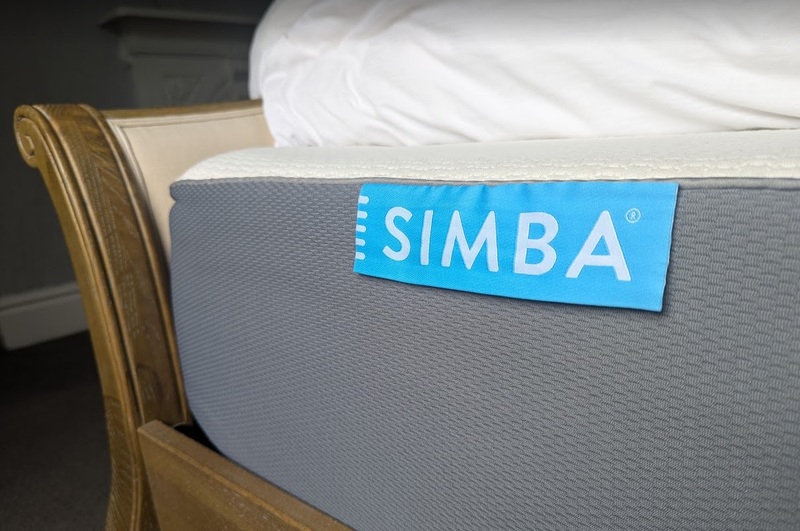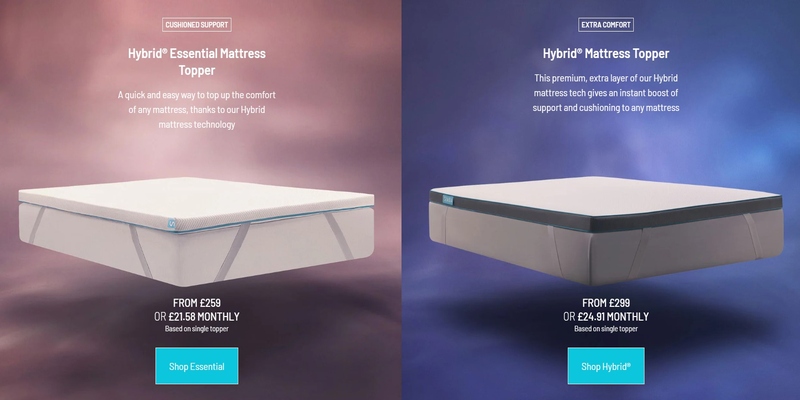
For the last 6 months of my time living in London, I didn’t have a bed.
I used to sleep on a mattress on the floor.
So when I moved back up North, bought a house with my fella, and then an expensive bed to put in said house, I was damned if I was going to settle for a cheap mattress to go on top. I wanted 5* luxury levels of comfort after slumming it for so long.
So we bought a big old King size French style bed from Time4Sleep, and began the hunt for the perfect mattress. The bed was a style choice, but the mattress was all about comfort and getting a good night’s sleep, and in the end we settled for a Simba.
That was back in 2016 and we still have it 8 years later.
I know a lot of people see the marketing for Simba mattresses and wonder whether they are worth the money, so I’m going to give you my take on the brand and on mattress matters in general.
You spend a third of your life in bed, so you want to make sure you’re sleeping on something good!
Is it Comfortable and Worth the Price?

The fact that we still have the mattress on our bed probably answers this question – we love it!
I spent my 20s living in rented accommodation furnished with divan beds and budget mattresses. When I first lay down on the Simba it was a game changer. It was so comfortable. The difference was night and day, and annoyingly, it means I now sleep badly almost anywhere else.
I spent decades sleeping perfectly well on cheap mattresses, but now my body knows the difference it’s ruined me. It’s like drinking a really good but pricey bottle of red wine. Everything else tastes like crap afterwards. You can never go back.
It’s not just me either. My other half had frequent lower back issues in the morning before we bought our Simba. He never has them anymore. The mattress slowly allows you to sink into it, then holds onto you and supports your body, which must be what is helping.
It also means when he rolls over it doesn’t wake me up, because there is much less ‘motion transfer’, to use the fancy technical term. Your girl’s been doing her homework 💁♀️
There was some sort of deal on when we bought ours – there usually is to be honest so it’s probably not a real deal – and I think we paid around £650 for it.
We could have paid less than half that for something else, but Simba had a 100 night money back guarantee if we didn’t like it so stumped up the cash.
The difference between a Simba mattress and generic non-branded options is in the quality of the materials, some patented technology, and the way the mattress is put together. So you are getting a much higher quality product for your money.
They do loads of different ones now, with between 4-11 layers, 1,000 – 7,000+ springs, depths of 20cm – 34cm, and different material types in each range too. To be honest, I’m not sure what the difference is between them all, but the price ranges from £600-£2,200 for a Double and £650-£2,300 for a King!
Spending over £2k on a mattress would give me sleepless nights rather than improved rest. I can’t imagine spending 300% more would result in a 300% better night’s sleep, so I would say go for their best selling Hybrid Pro if you want the best value. It’s in the Deluxe range, so there are cheaper options, but this one is affordable and definitely worth the price.
Do You Need to Replace Your Mattress Every 8 Years?

The official advice is indeed to change your mattress every 8 years or so, but that is general non-specific advice.
If I had bought something for £250 I would imagine that an 8 year shelf life would be good going, but our Simba came with a 10 year guarantee. So what gives?
Not all mattresses are made equal, so while 8 years might be about right for a mid-range mattress, a dirt cheap one made with rubbish materials might not last half that long, and a high end one made with premium materials might last twice as long. Simbas are hand made in the UK, rigorously designed and tested, and all the materials are British too.
The company obviously have enough faith in their product to guarantee it for a decade, so chances are it will last much longer than that. Ours is 8 years old and feels just as comfortable as it did on night one, so we are certainly not thinking of replacing it yet.
That’s another reason a more expensive mattress is better value – it lasts longer.
A good way to tell if your mattress is past its best is if you are starting to get back or neck pain. This usually means you aren’t being supported properly anymore. Look out for lumps and bumps that weren’t there before too. You can also lie flat facing up, and see if someone can easily slide their hand under the small of your back. If they can, it’s time for a new mattress.
Cleaning and Maintenance

All mattresses need looking after to get the best out of them.
I’ll admit I don’t look after mine properly, and I don’t think I’m the only one – it’s hardly the top of the list of priorities, is it? Especially if you have kids.
That said, when I change the sheets I strip the bed, open the window, and leave the mattress to air for a few hours before putting the new sheets on. Simba build their mattresses to be super breathable which helps with temperature regulation while you’re sleeping, but letting the air get to it is still a good idea.
The top layer on some can be unzipped and washed in the machine too. Ours doesn’t have that so I steam clean it as often as I can. I don’t do it half as often as I should, but don’t be like me, wash it at least every 6 months. You should also give the thing a good hoovering every couple of months. It’s gross but we sweat and shed dead skin cells in bed, so get cleaning.
We also use a mattress protector (not a Simba one, but they do sell them) which helps with this.
If you have any issues with staining you should spot clean them straight away, but if the mattress gets damaged the best thing to do is talk to the company. I know they sell refurbished mattresses so repairs must be possible.
Lastly, mattresses should be rotated every month or two and flipped every 3 to 6 months. However, Simba mattresses are different. You still need to rotate them, but flipping is not necessary as they are designed with a top and bottom layer, unlike most standard mattresses.
Cheaper Alternatives

If I have convinced you and you want the Simba experience but just can’t afford it, there are solutions:
- Refurbished mattresses
- Mattress toppers
- Finance plans
Refurbished mattresses are just ones that have been returned under warranty, checked, cleaned, and repaired if necessary, then sold on. If you feel icky about this, ask yourself if you have ever slept in a hotel bed. How many people slept on that hotel mattress before you do you think? Exactly. So stop being silly. They clean and sterilise to hospital standards and replace any parts that aren’t up to standard, so it really is fine.
Mattress toppers are a great half way house between a bog standard mattress and a Simba one. They are essentially thinner versions of the real thing that sit on top of an existing mattress to improve comfort and support. Given that Simba are a premium mattress company, you can expect them to be just as good at making mattress toppers. Or should I say they are the topper?
…It’s a bad joke, I know. Moving on.
The last option is taking out one of their finance plans. This will set you up on a payment plan over 12 months until you have paid off the cost of the mattress or topper you want. There’s no additional cost for this, it’s interest free so the mattress will cost the same amount, but you can pay it in affordable chunks.
I’m a huge fan of the company. They are an eco-conscious brand with a focus on sustainability, and they have created a genuinely top class product. When ours does eventually die a death, we will ship it off via Simba’s recycling service and buy another.
